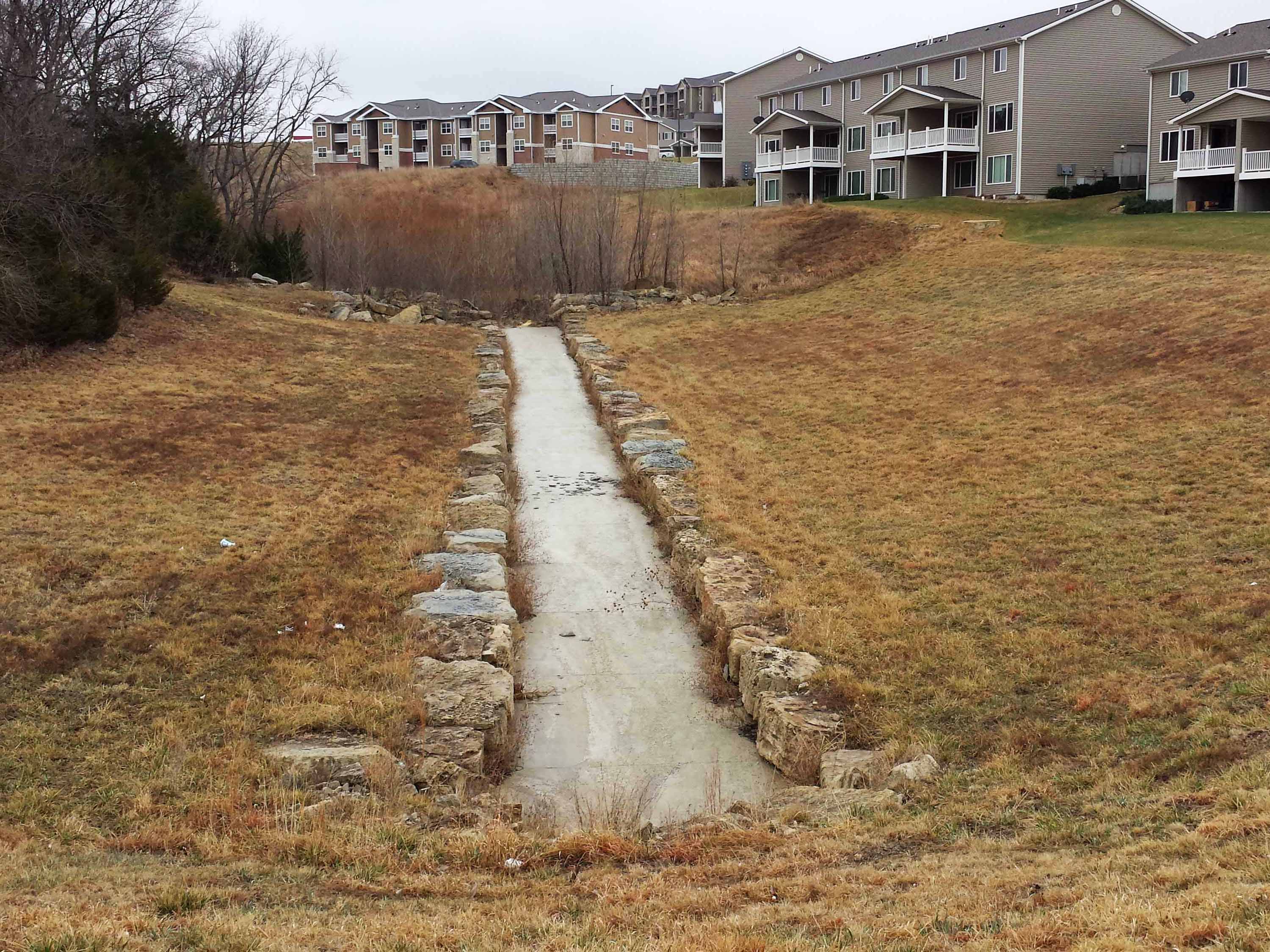If a pool overflows, it can cause water damage and potentially disrupt the pool system. When a pool overflows, the excess water can seep into the surrounding areas, causing damage to structures, electrical systems, and landscaping.
It can also damage the pool equipment and chemicals, affecting the balance and cleanliness of the water. In some cases, overflow can even lead to safety hazards such as slippery surfaces and electrical shock risks. To prevent pool overflow, it is essential to maintain proper water levels, regularly clean and inspect the pool, and ensure that the drainage system is functioning effectively.
By taking these precautions, you can avoid potential damage and maintain a safe, well-maintained pool area.

Credit: www.soils.org
Risks Associated With Pool Overflow
A pool overflow can pose significant risks, including damage to property, water wastage, and potential safety hazards. Excessive water can seep into the surrounding areas, causing structural damage to decks and foundations. It is crucial to regularly monitor pool water levels and take appropriate measures to prevent overflow.
Overflowing pools can lead to various risks, from property and structural damage to water contamination. It is important to understand the potential consequences of a pool overflow to take necessary precautions and avoid costly repairs.
Property Damage:
- Pool overflow can cause water damage to the surrounding areas of your property, including the deck, patio, and landscaping.
- Excessive water exposure can lead to erosion, soil displacement, and damage to plant life.
- Pool chemicals and debris carried by the overflowing water can stain or damage exterior surfaces, such as walls or fences.
Structural Damage:
- Continuous pool overflow can weaken the pool’s foundation and compromise its structural integrity.
- The excessive weight of the overflowed water can burden the pool walls, potentially causing cracks or collapse.
- Seepage of water into the ground can erode the supporting soil, further compromising the pool’s structural stability.
Water Contamination:
- When a pool overflows, the excess water can contaminate other areas of your property, such as nearby streams or groundwater sources.
- The overflowed water may contain chemicals, dirt, debris, or bacteria from the pool, which can harm the environment and pose risks to local ecosystems.
- Water contaminated with pool chemicals can be harmful to plants, animals, and humans if it enters drinking water sources or irrigation systems.
Taking preventive measures to avoid pool overflow is crucial to mitigate the risks mentioned above. Regularly monitor water levels, especially during periods of heavy rain or when the pool is in use. Ensuring proper drainage and investing in overflow prevention systems, such as automatic water levelers, can help minimize the chances of overflow.
By prioritizing pool maintenance and addressing any issues promptly, you can safeguard your property, prevent structural damage, and keep the water environment clean and safe.
Common Causes Of Pool Overflow
Pool overflow can occur due to various reasons, such as heavy rain, equipment malfunctions, or excessive use. This can lead to water damage, contamination, and potential safety hazards, making it essential to address the issue promptly to prevent further complications.
When a pool overflows, it can lead to a messy and potentially damaging situation. It’s important to understand the common causes of pool overflow to prevent this from happening. Some of the main culprits include:
Heavy Rainfall:
- Excessive rainfall can quickly fill up a pool beyond its capacity, causing it to overflow.
- Inadequate drainage systems or clogged gutters can exacerbate the problem by directing more water into the pool.
- Pool covers that are not properly secured can lead to rainwater accumulation, adding to the risk of overflow.
Malfunctioning Pool Equipment:
- A malfunctioning pool pump or filter can disrupt the pool’s water balance, resulting in excessive water levels and subsequent overflow.
- Issues with the pool’s automatic fill valve can also cause continuous water inflow, leading to overflow.
- Faulty water level sensors may fail to signal the pool to shut off the water supply, resulting in overflow.
Human Error:
- Overfilling the pool can occur when individuals inadvertently leave the pool filling unattended, causing it to overflow.
- Miscalculating the pool’s water capacity during maintenance or water treatment procedures can lead to unintended overflow.
- Neglecting to monitor the pool’s water level during heavy rainfall or rapidly changing weather conditions can contribute to overflow incidents.
Preventing pool overflow requires vigilance and proactive maintenance. Installing a pool cover, maintaining proper drainage systems, and regularly inspecting and servicing pool equipment are essential. By understanding and addressing these common causes of pool overflow, you can enjoy a worry-free swimming experience while protecting your pool from potential damage.
Signs That Your Pool Is At Risk Of Overflowing
Is your pool at risk of overflowing? Look out for signs like excessive water levels, water spilling over the pool edge, or weakened pool walls. Find out what happens when a pool overflows and how to prevent it.
Having a pool in your backyard can be a great source of enjoyment and relaxation, but it’s important to keep an eye on certain signs that might indicate your pool is at risk of overflowing. By being aware of these signs, you can take preventive measures to avoid any potential damage or inconvenience.
Here are some key indicators to watch out for:
High Water Level:
- The water level is consistently higher than usual, reaching the edge of the pool or even overflowing.
- The skimmer basket is unable to collect leaves and debris effectively due to the excess water.
- You notice water continuously spilling out from the pool during normal use.
Weak Pool Circulation:
- Insufficient circulation of water within the pool can contribute to an increased risk of overflow.
- Inadequate filtration or malfunctioning pool equipment may hinder proper water flow.
- Poor circulation can also lead to an accumulation of debris, adding to the potential for an overflow.
Excessive Debris In The Pool:
- A build-up of leaves, sticks, and other debris can obstruct the pool’s drainage system.
- When the water cannot freely flow through the drains, it increases the chances of overflow.
- Regularly check for and remove any debris present in the pool to maintain optimal water flow.
By staying vigilant and recognizing the signs of a potential pool overflow, you can save yourself from the hassle and expense of dealing with water damage. Remember to maintain proper water levels, ensure adequate pool circulation, and keep the pool free from excessive debris.
Taking these preventive measures will help you enjoy your pool while minimizing any risks of overflowing. Stay ahead of the game and give your pool the attention it deserves.
How Pool Overflow Can Damage Your Property
An overflowing pool can lead to serious property damage. Excessive water can seep into foundations, cause structural issues, and damage landscaping. It is important to address pool overflow to prevent costly repairs.
When a pool overflows, it can lead to various types of damage to your property. These damages can range from minor inconveniences to major structural issues. In this section, we will explore the different ways that pool overflow can impact your property.
Flooded Surrounding Areas:
- Excessive water from a pool overflow can flood the surrounding areas, such as your backyard or patio.
- This can result in water seeping into your home, causing damage to the interior walls and flooring.
- Flooding can also disrupt your outdoor activities and render the affected area unusable until the water is drained.
Damage To Landscaping:
- Spillover water can wash away the landscaping elements surrounding your pool, such as plants, flowers, and mulch.
- The excessive water can erode the soil, leading to uneven ground and potential foundation issues.
- Pool chemicals carried by the overflow can harm or kill vegetation and disrupt the balance of your garden ecosystem.
Structural Damage To The Pool:
- The excess water from pool overflow can put significant pressure on the pool structure, leading to cracks and leaks.
- If the water seeps into the pool’s foundation or surrounding structures, it can weaken their integrity over time.
- Persistent overflow can cause damage to pool equipment, including filters, pumps, and heaters, requiring costly repairs or replacements.
Pool overflow can have detrimental effects on your property. From flooded surrounding areas to damage to landscaping and structural issues with the pool, the consequences can be significant. It is important to address any overflow issues promptly to minimize the damage and ensure the longevity of your pool and property.
The Dangers Of Water Contamination In An Overflowing Pool
Water contamination is a serious concern when a pool overflows, posing health risks. The excess water can introduce bacteria, algae, and chemicals into nearby areas, potentially causing illness and environmental damage. Avoiding pool overflow is essential to maintain a safe and clean swimming environment.
Imagine lounging by your pool on a beautiful summer day, when suddenly, you notice the water level rising dangerously close to the edge. An overflowing pool may seem like a minor inconvenience, but it can lead to serious consequences if left unattended.
Among the potential dangers is the risk of water contamination, which can have a detrimental impact on both your health and your pool’s equipment. In this section, we will explore the increased risk of waterborne diseases, the damage to pool equipment, and the difficulty of restoring pool balance that comes with an overflowing pool.
Increased Risk Of Waterborne Diseases
- Contaminated water in an overflowing pool can become a breeding ground for bacteria, viruses, and parasites.
- Exposure to these microorganisms can lead to various waterborne illnesses, such as diarrhea, stomach cramps, and skin infections.
- The risk of contracting infections like e. coli, salmonella, or cryptosporidium increases dramatically when the pool water is contaminated.
- Ingesting or coming into contact with contaminated water can result in severe health complications, especially for individuals with weakened immune systems, young children, and the elderly.
Damage To Pool Equipment
- Pool equipment, such as filters, pumps, and heaters, can be affected by an overflowing pool.
- Excessive water pressure caused by overflowing can strain the equipment, leading to leaks or even complete failure.
- Electrical components within the pool’s operating system may be at risk of short-circuiting or corrosion due to constant exposure to water.
- The damage to pool equipment can result in costly repairs or replacements, disrupting your pool enjoyment and requiring professional assistance.
Difficulty Restoring Pool Balance
- An overflowing pool can disturb the delicate balance of chemicals necessary to maintain clean and safe water.
- The influx of fresh water dilutes essential chemicals, making it challenging to maintain proper ph, alkalinity, and sanitization levels.
- Restoring pool balance becomes a time-consuming and meticulous task, requiring frequent testing, adjustments, and chemical additions.
- Improperly balanced pool water can lead to discomfort, irritation, or even injury to swimmers, as well as the growth of algae and bacteria.
Remember, a pool overflowing may seem like a minor concern initially, but the potential risks should not be underestimated. Promptly addressing the issue and taking necessary measures to prevent water contamination, equipment damage, and difficulty in restoring pool balance is crucial.
Regular maintenance, proper water level monitoring, and professional assistance when needed are key to ensuring the safety and longevity of your pool and the well-being of those who enjoy it.
Steps To Prevent Pool Overflow
Overflowing pools can lead to various problems. Excessive water can damage the pool structure, surrounding landscape, and even nearby property. It is essential to take preventive measures to avoid pool overflow, such as monitoring water levels, installing an overflow drain, and maintaining proper drainage systems.
A pool overflow can lead to water damage and expensive repairs. To avoid this unfortunate situation, taking preventive measures is essential. Here are some steps you can follow to prevent pool overflow:
Regular Maintenance Checks:
- Conduct regular pool maintenance checks to ensure everything is functioning properly and to identify potential issues early on.
- Keep an eye on the water level and use a pool water level gauge to monitor it accurately.
- Clean out debris, such as leaves and dirt, from the pool skimmer and filter regularly.
- Inspect the pool equipment, including the pump, valves, and pipes, for any signs of leaks or blockages.
- Maintain the proper chemical balance in the pool water to avoid excessive foaming or overflowing caused by high water pressure.
Proper Landscaping And Drainage:
- Plan your pool’s location carefully, considering the natural slope of the land and its proximity to structures like your home or other buildings.
- Ensure that your pool area has proper landscaping and drainage to prevent rainwater from flowing into the pool excessively.
- Install gutters, downspouts, and drains to redirect rainwater away from the pool area.
- Create a landscaped buffer zone around your pool where excess water can be absorbed by the soil and plants.
- Consider the installation of retaining walls or barriers to prevent runoff from flowing into the pool during heavy rainstorms.
Installing An Overflow Drain:
- Install an overflow drain in your pool to act as a safety measure if the water level reaches a certain point.
- An overflow drain will automatically drain excess water from the pool, preventing overflow and potential damage.
- Consult a professional pool builder or technician to ensure the overflow drain is installed correctly and complies with local regulations.
- Test the overflow drain regularly to ensure it is functioning correctly and not obstructed.
- Regularly check the drain cover for any signs of damage or wear and replace if necessary.
By following these steps, you can minimize the risk of pool overflow and protect your pool from costly damages. Remember, prevention is always better than dealing with the consequences of an overflowing pool.
How To Handle A Pool Overflow Situation
Overflow situations in pools can lead to various problems such as damage to surrounding areas and equipment. It is crucial to address the issue promptly by turning off the pool’s water source, adjusting the water level, and periodically checking for any signs of ongoing overflow to prevent further complications.
Shutting Off Pool Equipment
When your pool overflows, it’s crucial to take quick action to prevent further damage. Shutting off the pool equipment is the first step in handling this situation effectively. Here’s what you need to do:
- Turn off the pool pump: Locate the circuit breaker that controls the pool pump and turn it off. This will stop the circulation of water and prevent any more water from being pumped into the pool.
- Switch off the automatic fill valve: If your pool has an automatic fill valve, ensure it is turned off. This will prevent additional water from entering the pool and exacerbating the overflow.
- Disable any water features: If you have any water features such as waterfalls or fountains, switch them off to stop the flow of water into the pool.
Removing Excess Water
Now that you’ve shut off the pool equipment, it’s time to address the excess water. Here are the steps to follow:
- Use a submersible pump: If the water level is significantly higher than the pool’s edge, a submersible pump can help remove the excess water efficiently. Place the pump in the pool, connect the hose, and direct the water away from your property.
- Use a pool cover pump: If the water level is only slightly above the pool’s edge, a pool cover pump can be effective in removing the excess water. Simply place the pump on the cover and let it do its job.
- Drain the pool manually: In extreme cases where the water level is dangerously high, you may need to drain the pool manually. Consult a professional or refer to your pool’s user manual for guidance on how to safely drain the pool.
Cleaning And Disinfecting The Pool
After removing the excess water, it’s crucial to clean and disinfect the pool to maintain a safe and hygienic swimming environment. Follow these steps:
- Skim the surface: Use a skimmer net to remove any debris floating on the surface of the pool. This will prevent it from clogging the filter and affecting water quality.
- Brush the walls and floor: Use a pool brush to scrub the walls and floor of the pool to remove any dirt or algae buildup. Pay extra attention to areas that were affected by the overflow.
- Shock the pool: To disinfect the pool and restore water clarity, add a pool shock treatment according to the manufacturer’s instructions. This will help kill bacteria and algae.
- Monitor water balance: After the pool has been cleaned and disinfected, regularly check and maintain the water balance by testing the ph, chlorine levels, and other chemical parameters. This will ensure a healthy swimming environment.
Remember, handling a pool overflow effectively requires prompt action. By shutting off pool equipment, removing excess water, and cleaning and disinfecting the pool, you can tackle this situation and get your pool back to its optimal condition.
Professional Help And Solutions
When a pool overflows, it can cause damage to the surrounding area and equipment. Professional help and solutions are essential in resolving the issue and preventing further complications. Trust experts to address the situation promptly and effectively.
When it comes to a pool overflowing, it’s essential to take immediate action to prevent any further damage. In this section, we will explore the professional help and solutions available for dealing with an overflowed pool. By following these recommended steps, you can safeguard your pool infrastructure and ensure a quick recovery.
Calling A Pool Specialist:
- Reach out to a qualified pool specialist who can assess the situation and provide expert guidance.
- The pool specialist will inspect the pool area, identify the cause of the overflow, and recommend appropriate measures.
- Depending on the severity of the issue, the pool specialist may suggest solutions such as adjusting water levels, repairing or replacing pool equipment, or taking preventive measures for the future.
Repairing Pool Equipment:
- If the overflow is caused by malfunctioning pool equipment, such as damaged pipes or faulty filtration systems, immediate repairs may be necessary.
- A professional pool technician can effectively diagnose and address any equipment-related issues.
- Some common repair options include fixing leaks, replacing valves or pumps, and ensuring proper functioning of filters and drain systems.
Waterproofing Measures:
- To prevent future overflows, pool waterproofing measures can be implemented.
- Applying a waterproof sealant can help protect the pool structure and ensure its durability.
- Additionally, the pool specialist may recommend installing overflow drains or implementing proper water diversion systems to prevent excess water accumulation during heavy rains or pool use.
By promptly contacting a pool specialist, addressing equipment repairs, and implementing waterproofing measures, you can effectively mitigate the risks associated with a pool overflow. Remember, seeking professional help and taking preventive measures are key to ensuring the longevity and functionality of your pool.
Frequently Asked Questions On What Happens If Pool Overflows
What Happens If A Pool Overflows During Heavy Rainfall?
If your pool overflows during heavy rainfall, it can cause water damage to your property and surrounding areas. The excess water can seep into the foundation, causing cracks and structural issues. Additionally, the overflowed water can carry debris and contaminants into the pool, affecting its cleanliness and chemical balance.
Can An Overflowing Pool Damage The Pool Equipment?
Yes, an overflowing pool can damage the pool equipment. The excess water can enter the pool pump and filter, causing them to malfunction or even break. It can also damage the pool heater and other electrical components, leading to costly repairs or replacements.
Regular maintenance and monitoring water levels can help prevent this damage.
How Can One Prevent A Pool From Overflowing?
To prevent a pool from overflowing, you can install an automatic pool water leveler that senses and adjusts water levels. Regularly monitor the water levels and make sure not to overfill the pool. Proper drainage systems around the pool area can also help redirect excess water during heavy rainfall.
Conclusion
Overflowing a pool can have serious consequences, both for the pool itself and the surrounding area. Not only can it lead to water damage and structural issues, but it can also pose a safety hazard to those nearby. Excess water can damage the pool’s equipment, such as pumps and filters, requiring costly repairs.
Additionally, the water can seep into the ground and affect the foundation of nearby structures, leading to further expenses and potential structural damage. Moreover, overflowing water can create slippery surfaces and increase the risk of accidents, especially for children and pets.
Preventing pool overflow is crucial to ensure the longevity and safety of your pool and its surroundings. Regular maintenance, monitoring the water level, and installing overflow drains are all effective ways to avoid potential problems. By taking the necessary precautions, you can enjoy your pool without the worry of unexpected overflow and the associated consequences.

“My name is Leo Jacob, and I hold a Bachelor of Science degree with Honors in Applied Environmental Science and Sustainability from the University of the West of Scotland. Since childhood, I’ve been passionate about living an eco-friendly life. After completing my studies, I dedicated myself to finding simple ways to lead a more environmentally conscious lifestyle. I launched ecolifely.com to share my educational background and practical experiences with everyone, hoping to inspire others to join me in creating a greener, more sustainable world.”










